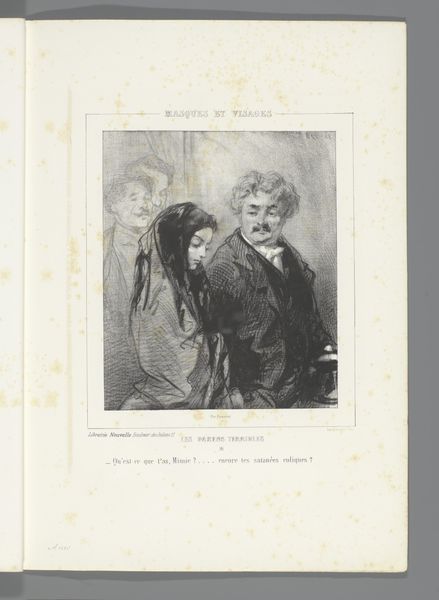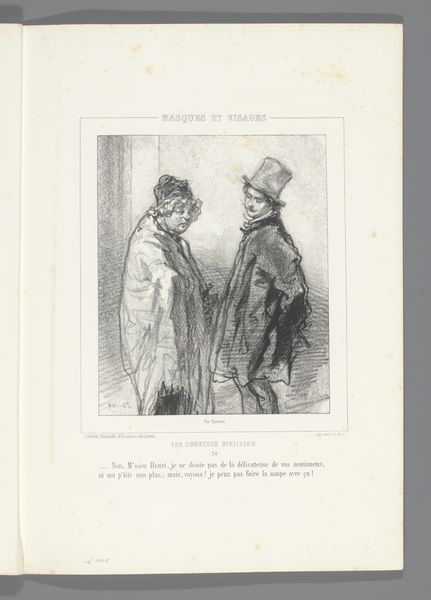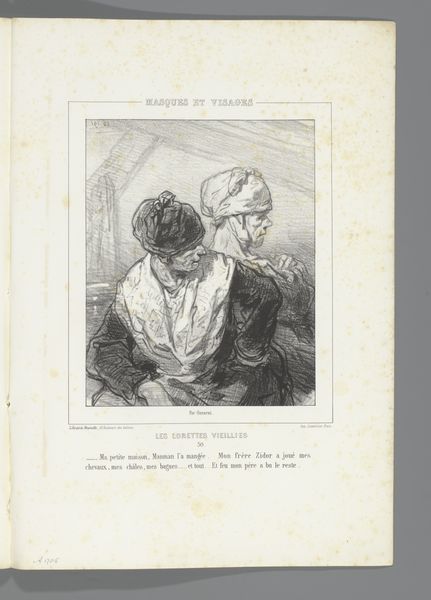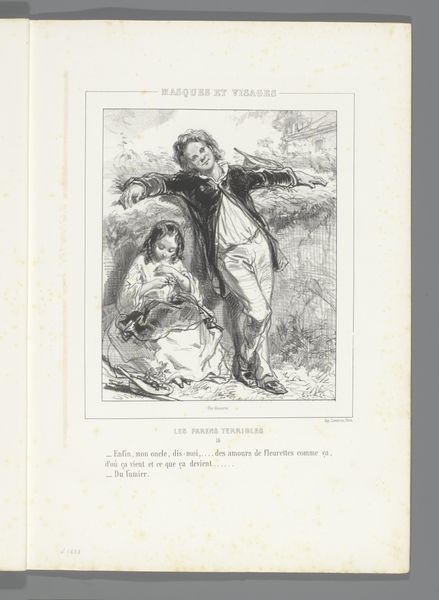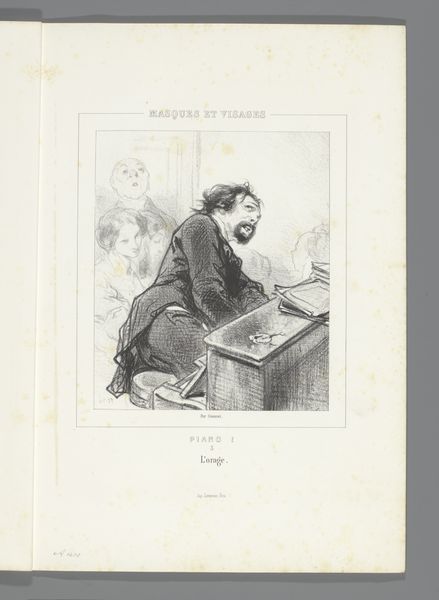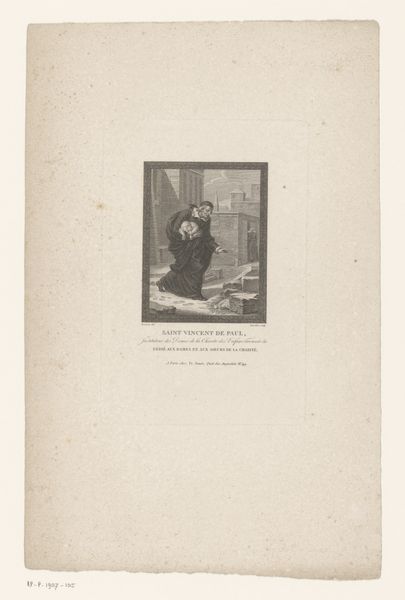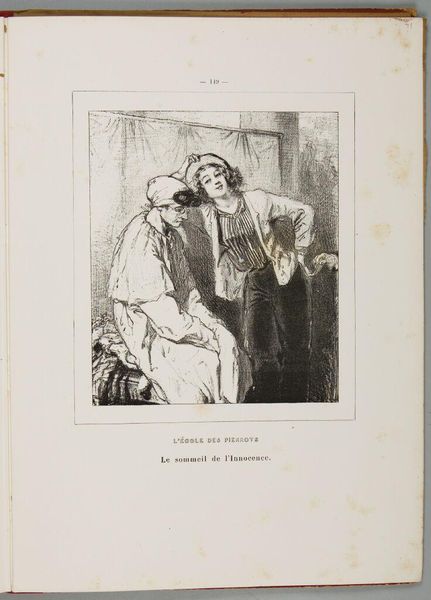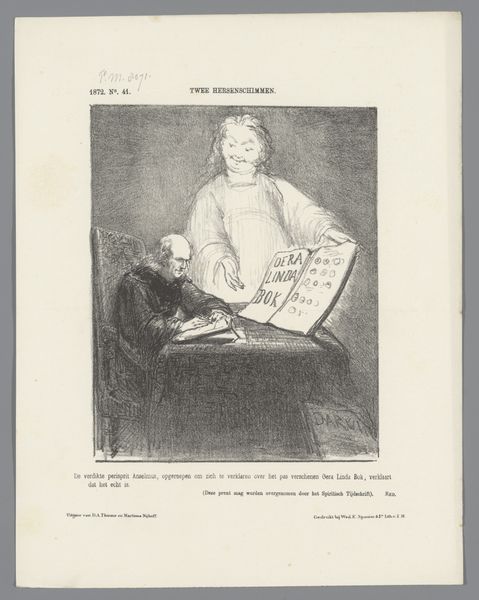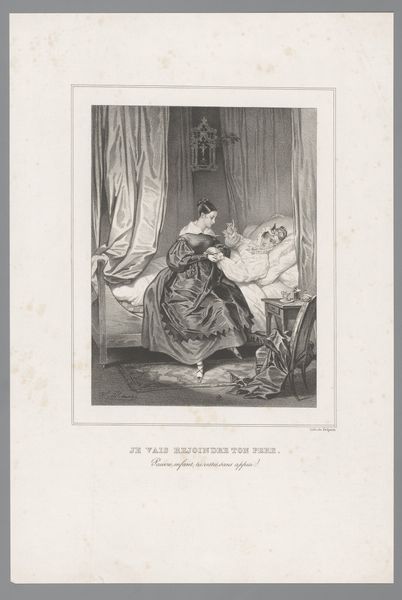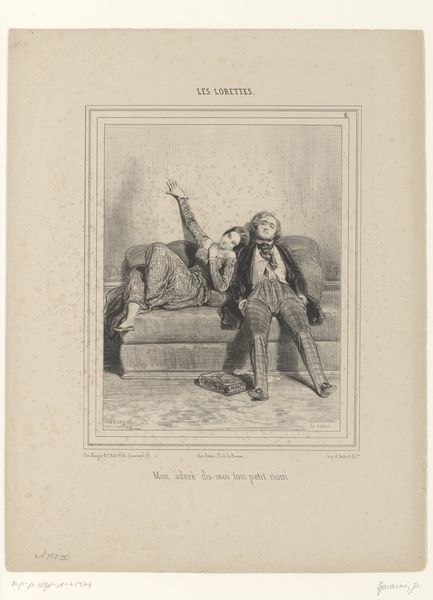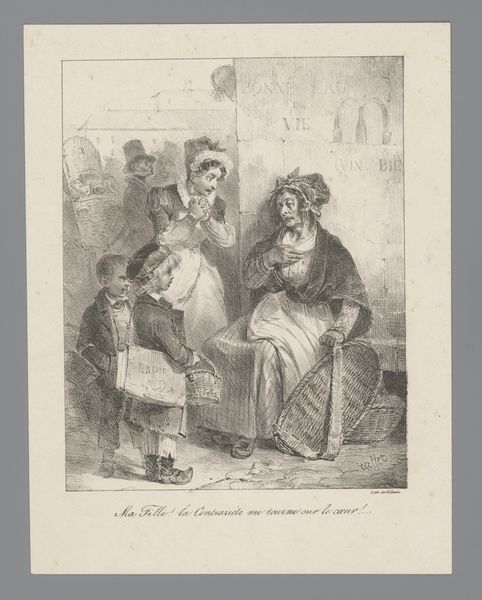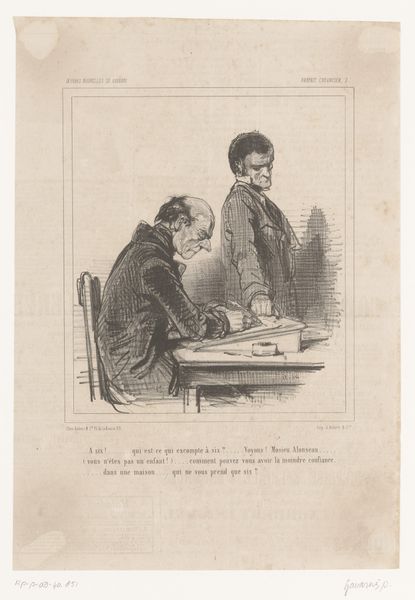
Dimensions: height 378 mm, width 275 mm
Copyright: Rijks Museum: Open Domain
Curator: Ah, yes, this lithograph by Paul Gavarni, created in 1853, titled "Muziekdocent met zingend meisje achter de piano"—Music Teacher with Singing Girl Behind the Piano. What strikes you first about it? Editor: Immediately, I notice the teacher’s weariness; his eyes seem heavy, perhaps from a long day of drilling scales. The composition feels a little claustrophobic, emphasizing the confined nature of the girl's musical education and societal expectations of the time. Curator: The drawing style indeed creates that effect. It is interesting to consider the social context, particularly the burgeoning middle class and the rise of domestic entertainment in the 19th century. Music lessons became a symbol of status, demonstrating a family’s prosperity and a young woman’s refinement, even if the lessons themselves weren’t necessarily enjoyed by everyone. Editor: Precisely. This piece functions almost as social commentary, a reflection on the labor involved, not just of the student and the teacher, but of the industry supporting such domestic performances: the instrument makers, the sheet music printers, and even the clothing manufacturers whose wares adorn the figures. Curator: Absolutely. The materiality of this artwork itself points to a key element: the proliferation of printed images. Lithography allowed for a wider circulation of art, and artists like Gavarni tapped into this medium to portray everyday scenes. The quick strokes of pen and ink suggest a directness, a feeling of immediacy, but also reflect the mechanical reproducibility of the image. Editor: The stark contrasts, the cross-hatching creating shadows on the piano—these are efficient, cost-effective artistic decisions for mass production, of course, but also indicative of the artistic conventions influencing artists during the Romantic era, prioritizing feeling and mood. How the gallery setting contextualizes Gavarni's intent within a framework of institutional priorities seems really crucial. Curator: A perceptive point. Seeing it framed and preserved here lends Gavarni's social commentary a newfound historical and aesthetic weight— elevating a commonplace genre scene into an artifact worth contemplating in the present day. Editor: Well, in any case, considering its genesis from material production to institutional curation opens up a whole symphony of avenues for interpretation, far beyond a simple snapshot of a music lesson. Curator: I agree. There is always more than meets the eye when we unpack art through its own physical construction.
Comments
No comments
Be the first to comment and join the conversation on the ultimate creative platform.
